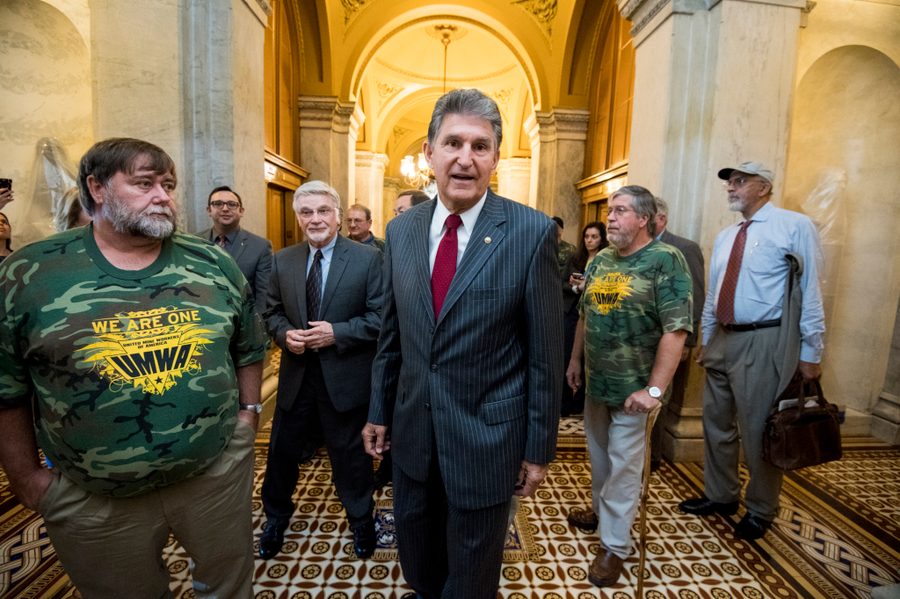
On June 22, a group of U.S. senators representing major coal-mining states sent a letter to the Biden Administration’s Office of Management and Budget (OMB) Director Shalanda Young demanding answers about a proposed rule from the Mine Safety and Health Administration (MSHA) to update the respirable crystalline silica standard. In doing so, Sens. Joe Manchin (D-W.V.), Sherrod Brown (D-Ohio), Bob Casey (D-Pa.), John Fetterman (D-Pa.), Mark R. Warner (D-Va.) and Tim Kaine (D-Va.) have added their voices to a chorus of organizations who have been calling on the federal government to enact such a rule for decades. A coalition of 28 groups, including the United Mine Workers of America, Appalachian Citizens’ Law Center, the National Black Lung Association and Appalachian Voices, sent a June 29 letter interrogating the rulemaking delay.
A proposed safety regulation doesn’t make for the spiciest reading, but it’s difficult to overemphasize its importance to the growing population of workers in Central Appalachia who have fallen victim to black lung disease in the past decade. In These Times recently published an investigation into this hidden public health crisis, and found that cases of advanced black lung have skyrocketed among younger coal miners. According to 2021 data from the National Institute for Occupational Safety and Health (NIOSH), over 1 in 8 coal miners in Kentucky and West Virginia who have spent more than 20 years underground have been diagnosed with black lung. Considering that many of these workers began their mining careers straight out of high school, that means that miners in their mid 30s and early 40s are now battling the same dreaded disease that their parents and grandparents feared.
But a black lung diagnosis does not have to be inevitable, and there is no good reason that an entire new generation of coal miners are at risk of contracting a disease that is a death sentence. Expert after expert has agreed that, if coal operators were to follow proper safety procedures and enact the correct engineering controls, workers could be spared from inhaling the deadly dust. Too many companies instead elect to cut corners in the pursuit of profit, and as a result, miners are exposed to highly unsafe levels of silica. The proposed silica rule would change that by significantly lowering the allowable amount of respirable crystalline silica to which a worker can be exposed during a 10-hour shift.
The current standard allows miners to be exposed to as much as 100 micrograms of silica dust per cubic meter, which is twice as high as the silica limit for workers in all other industries. The new rule would cut that down by half to 50 micrograms — and finally catch up to the recommendation that NIOSH made back in 1974. MSHA sent the proposed rule off to the OMB in January 2023, where it has languished ever since. It’s now been six months, roughly twice as long as a normal review period, and the senators are demanding answers.
“While we understand that the federal rulemaking process is complex and can be time consuming, the critical importance of an updated silica standard is essential to the health and safety of our nation’s coal miners,” they write. “What is the current status of a new silica standard in the interagency review process? What, if any, barriers exist to releasing this rule in a timely proposal? What is your current anticipated timeline for the promulgation of a new silica standard?”
Black lung advocates and patients are all eagerly awaiting the Biden administration’s answer, though it goes without saying that they’re awfully tired of holding their breath.
Kim Kelly is a freelance journalist and author based in Philadelphia, PA. She is a labor writer for In These Times, a labor columnist at Teen Vogue and Fast Company, and regularly contributes to many other publications. Her first book, FIGHT LIKE HELL: The Untold History of American Labor, is now available from One Signal/Simon & Schuster. Follow her on Twitter at @grimkim and subscribe to her newsletter, Salvo, here.









